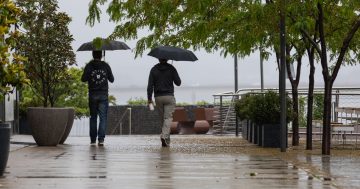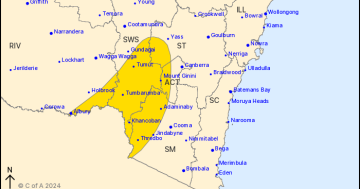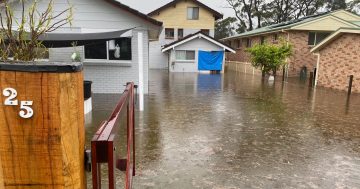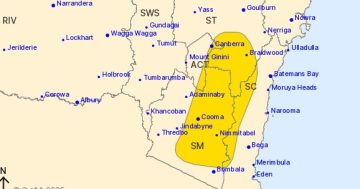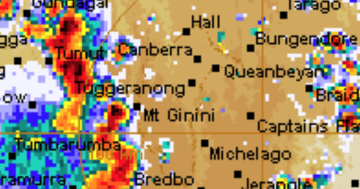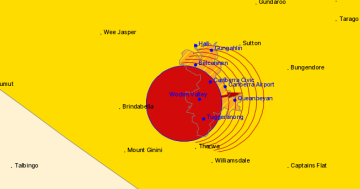
Flash flooding is possible as a result of the heavy rain. Photo: Claire Fenwicke.
The patchy rain we’ve seen throughout today (5 February) is a small taste of things to come as ex-tropical cyclone Kirrily makes its way across NSW.
The cyclone brought devastating rain to Queensland, and the Bureau of Meteorology has now issued a broad heavy rain warning for northern parts of the Territory.
Meteorologist Angus Hines said the ex-tropical cyclone was expected to “move rapidly” across Canberra and NSW between now and lunchtime tomorrow (6 February).
“So we’re really talking Monday evening, overnight tonight, and Tuesday morning for the potential heavy falls to spread across NSW,” he said.
“It does look like the southern side of the low [pressure system] will get the most significant rain … Canberra is right in the line, right in the path of the heavier rainfall totals.”
Canberra and surrounds could see anywhere between 50 and 100 millimetres of rainfall over the next 24 hours, as well as parts of the South Coast.
Thunderstorms are also a possibility which would bring heavier localised rainfall.
Flood watches have been issued for the Queanbeyan and Molonglo Rivers.
The heavy rainfall warning has also seen ACT Policing advise motorists to take particular care on Canberra’s roads this week.
Along with the rainfall, several groups of protesters are planning to descend on the Capital for the first sitting week of Federal Parliament for 2024.
Commuters are expected to particularly be impacted tomorrow morning (6 February) on Northbourne Avenue and Commonwealth Avenue as protesters make their way to Parliament House.
“No planned road closures are in place however there may be traffic disruptions before 10am. Please consider taking an alternate route to your destination if you do not want to be disrupted in your travel,” an ACT Policing statement read.
“During the day protestors will assemble at the Federation Mall at Parliament House. At this stage access to the building and carparks are not expected to be affected.”
In the event of extreme weather, the State Emergency Service advises:
- Don’t drive, ride or walk through flood water
- Keep clear of creeks and storm drains
- If you are trapped by flash flooding, seek refuge in the highest available place and ring 000 if you need rescue
- Be aware that run-off from rainfall in fire affected areas may behave differently and be more rapid. It may also contain debris such as ash, soil, trees and rocks
- After bushfires, heavy rain and the loss of foliage can make the ground soft and heavy, leading to a greater chance of landslides
- Move vehicles under cover or away from trees
- Secure or put away loose items around your house, yard and balcony
- Keep at least 8 metres away from fallen power lines or objects that may be energised, such as fences
- Trees that have been damaged by fire are likely to be more unstable and more likely to fall
- Report fallen power lines to either Ausgrid (131 388), Endeavour Energy (131 003), Essential Energy (132 080) or Evoenergy (131 093) as shown on your power bill
- Stay vigilant and monitor conditions. Note that the landscape may have changed following bushfires.
For emergency help in floods and storms, ring your local SES Unit on 132 500.















